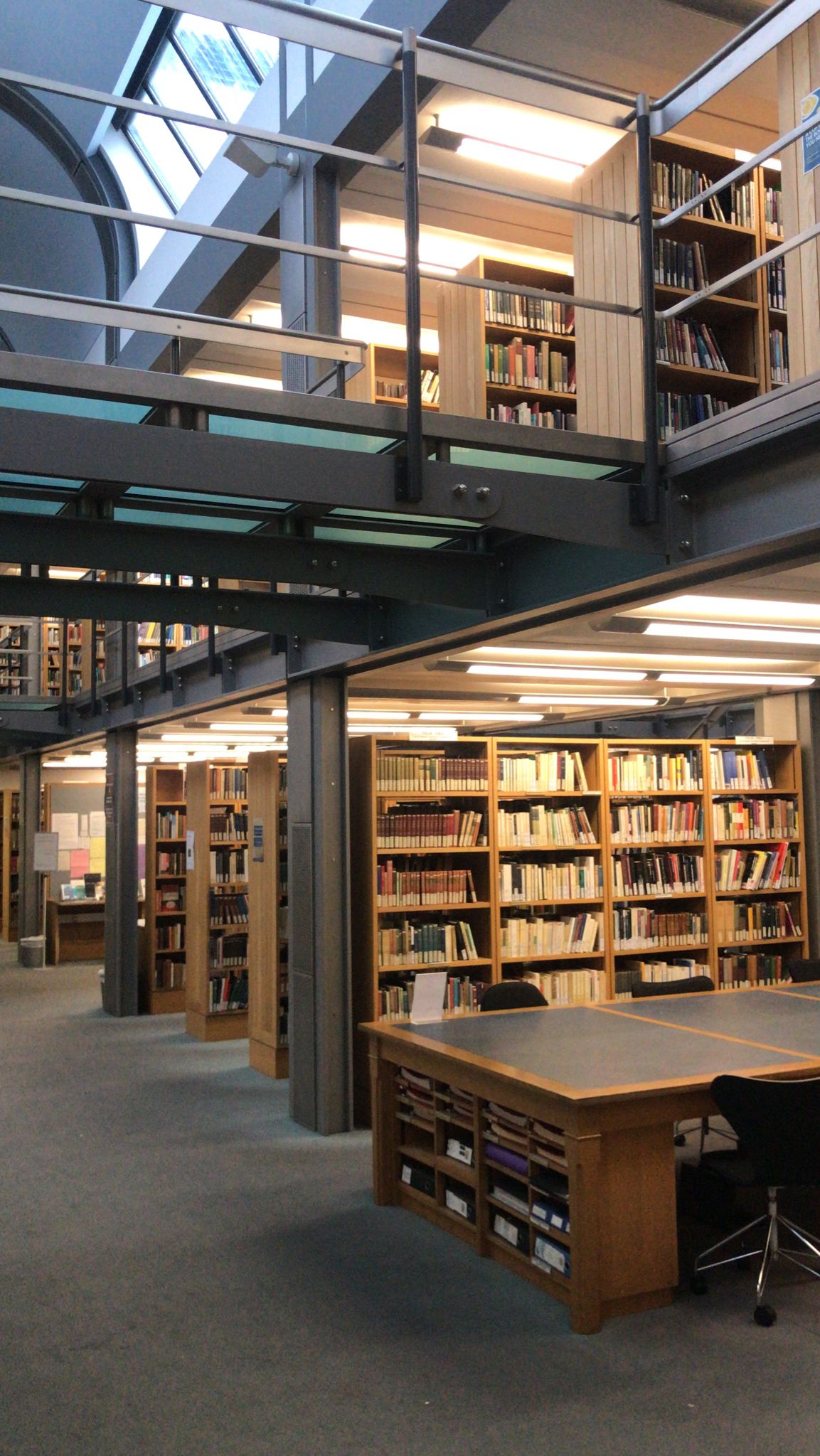Last week, we had the first of our visits to one of our own trainees’ libraries – Newnham College. Newnham is a women’s College founded in 1871, with the Library being first constructed in 1897. The Library was a gift from Henry and Elizabeth Yates Thompson who had close connections to the College and its founders, including the architect Basil Champneys. The 2004 modern extension is named the Horner Markwick Library after two previous Librarians of the College, who both generously donated funds towards expanding the Library.
Our tour started in the Archive, where the Archivist had laid out a selection of photographs and other items of note from the College’s history for us to view. Of particular note was a letter written by Rosalind Franklin, whose later work would contribute hugely to our understanding of DNA structure. At the time of the letter, Franklin was a first-year undergraduate student, and wrote to her parents of the exciting news of the first female professor elected in either Oxford or Cambridge (this was Dorothy Garrod), who had been elected from Newnham. Franklin also noted that there was still a question over whether, as a woman, she would be given full membership of the University.
Our visit to the Archive also elicited a fascinating discussion about archiving personal histories of people who have been marginalised throughout history. Collection of personal letters and photographs allows us to now reveal and understand some aspects of women’s lives that would have been ignored, deliberately hidden, or suppressed in previous centuries and decades, for example LGBTQ+ identities and relationships.

Our Newnham trainee then took us on a tour of the Library reading rooms, explaining the layout and their classification scheme. The size of the collection was particularly impressive, and is one of the best-stocked undergraduate college libraries in Cambridge. For a College with around 400 undergraduates, a collection of over 100,000 volumes gave a much larger ratio of book-to-student numbers compared to other College libraries such as my own, Pembroke. I was then reminded that for a long time, women were not permitted to enter the University or faculty libraries, and thus the College needed to stock anything its women could potentially need for their studies, explaining the large collection.
The Library building itself was beautiful to see. We first explored the modern extension of the library, where the majority of reader spaces and the main Library office now lie. It is bright and spacious, and though very modern in appearance, its layout and vaulted ceiling bring with it a continuity of style into the old library. The similarly vaulted ceiling in the old Yates Thompson library features beautiful panels displaying printers’ marks from European printers that Henry Yates Thompson, himself a collector of manuscripts and early printed books, highly regarded.

Throughout the library were several displays. Some of these were created by students themselves, while others had been put together by Library staff. Highlights were the ‘Roger’s Collection’ of late 19th century children’s literature and folk stories from around the world, on display in the old library, and the display about women obtaining the right to education in Cambridge, on display in the lift corridor. The latter of these featured shocking photos of riots that ensued when the question of women obtaining degrees was put to the (all-male) University members, and in particular of the vandalism Newnham College was subjected to by opponents of women seeking the right to receive a degree.
Next, we were shown the Katharine Stephens Rare Books Library, named for the Librarian who presided over the creation of the Yates Thompson Library. The Assistant Librarian gave us a tour of one of their current rare book exhibitions they’ve put together for students, about the history of Sociology and Anthropology. She explained that the Library begun to put together collections of rare books related to each Tripos subject studied at Newnham, which they would then invite students to look at during their subject formal halls. This not only enabled the students to become aware of and engage with relevant texts and resources in the Library, but also allowed the Library staff to continue to get to know their large collection of rare books by challenging them to find books relating to particular subjects.
The overall impression of Newnham College Library was one of a welcoming and friendly study space, with a large and diverse collection of books and materials for its students. It is a great example of a library whose space and collections have been truly shaped by its history and users. Having been one of the only spaces for women studying in Cambridge for so many years, it appears to have fostered an incredibly supportive and close-knit environment, leading to its alumnae and members giving generously to maintain and expand the Library and its collections.
